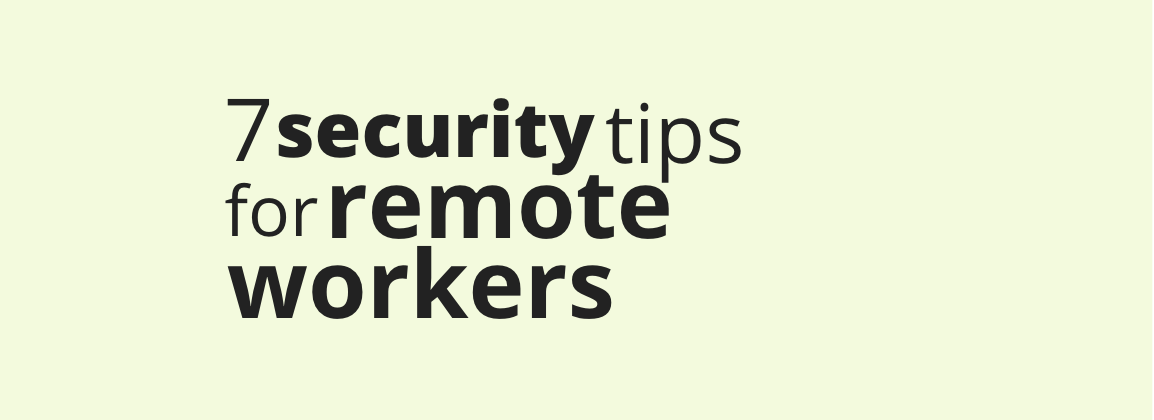
Remote work is a great way to continue business operations when working in the office isn’t an option. However, remote work also comes with a lot of new security risks that aren’t present in a trusted office environment.
Read More: 11 Essential Tools For Remote Work
To help protect your privacy and data, follow these general guidelines when working from home.
1. Avoid Public WiFi And Secure Your Home Network
Unsecured public wifi networks are ripe grounds for cybercriminals looking to collect confidential information. To ensure your connection at home is secure, update your router login/password and encrypt your connection. If you’re wifi requires a password to connect, it’s encrypted – but some encryption standards are outdated. You can check or change the encryption type in your router settings.
2. Be Vigilant And Think Before You Click
Over the last few weeks, there’s been an increase in social engineering and phishing campaigns targeting remote workers, and Coronavirus-themed phishing kits have emerged for sale on the Dark Web.
Don’t click on links or open attachments in emails or texts without properly vetting the source. After that, check for other signs like HTTPS, grammar, syntax, spelling, etc. that might alert you of the authenticity (or lack thereof) of an email or website.
How To Spot A Phishing Email: 9 Telltale Signs
3. Regularly Update Your Devices
It’s critical to keep your operating systems and software up-to-date. These updates often include critical security patches that are designed to protect your data and devices.
4. Protect Devices With Antivirus Software
A good managed antivirus/antimalware protection software can do a lot to protect your systems and data. Be sure to research thoroughly before you install any new programs to your device.
5. Use Strong Passwords
It is vital to protect all devices and accounts with strong passwords. A strong password should consist of a long string of lower and upper case letters, numbers, and special characters. Additionally, you should use a different password for each device and account to mitigate the risk of credential stuffing – a tactic in which cybercriminals use leaked credentials from one account to access additional accounts.
We suggest using a password manager like LastPass to help you securely keep track of your passwords.
5 Free Cybersecurity Resources
6. Backup Your Data
You should back up your data to the cloud on a nightly basis. Performing nightly backups will allow you to have multiple backups available in case the most recent gets locked in an attack or is lost due to device failure or human error.
Read More: 4 Quick Cybersecurity Tips
7. Follow Physical Security Protocols
If you share living space with people you can’t share information with, take these additional steps to protect your data:
- Lock your device
- Log out before walking away
- Don’t use random thumb drives
- Shred sensitive papers
- Beware shoulder surfers
If your organization isn’t used to working remotely, Intellithought is here to support you and your team. Intellithought can make it easy to securely access your work devices from anywhere in the world, enabling you and your team to work remotely and maintain efficient communication. If you have questions or would like to request service, please fill out the form below, and we’ll help make sure you’re set up to maintain business operations.
What tips do you have for staying secure remotely? Let us know on Facebook, Twitter, Instagram, or LinkedIn!

